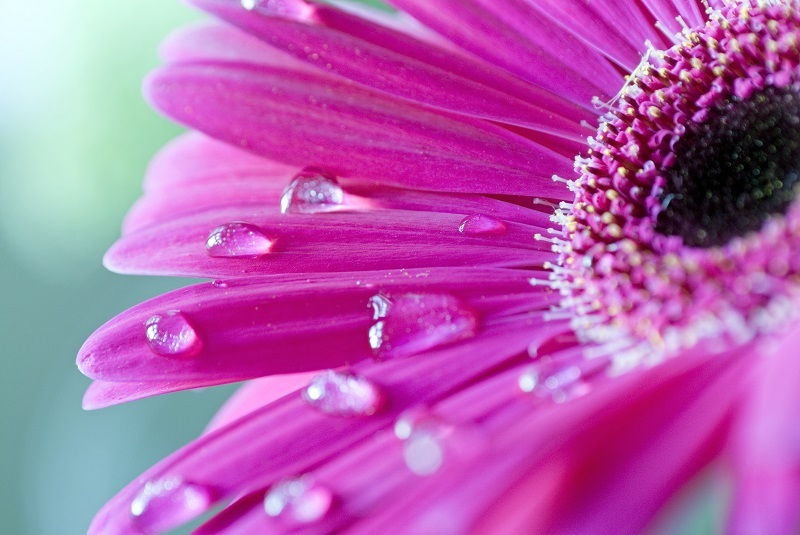Orchid Nurturing: A Complete Guide
Posted on 18/08/2025
Orchid Nurturing: A Complete Guide
Orchids have captivated garden lovers and plant enthusiasts for centuries. With over 25,000 species and hybrid varieties, orchids are among the most diverse and beautiful flowering plants on earth. However, their reputation for being delicate and demanding often makes people think twice before bringing them home. Whether you are a beginner or a seasoned grower, this comprehensive guide aims to demystify orchid nurturing, turning your experience into a fulfilling journey of blooms and lush growth.
Why Choose Orchids?
Orchids provide a unique charm and sophistication to any collection. From the ethereal Phalaenopsis (Moth Orchid) to the exotic Cattleya and striking Dendrobium, these flowering plants display an incredible variety of shapes, colors, and fragrances. But their allure doesn't end at beauty -- when cared for properly, orchids can bloom for months, returning year after year.
- Long-lasting blooms
- Diverse varieties to choose from
- Air-purifying capabilities
- Suitable for indoor spaces

Understanding Orchid Basics
Before diving into the depths of orchid nurturing, it's essential to understand what makes these plants unique. Orchids are epiphytes, meaning they naturally grow on trees but not as parasites. They extract moisture and nutrients from the air and debris surrounding them -- a critical fact that influences their care requirements.
Orchid Types Commonly Grown at Home
- Phalaenopsis (Moth Orchid): The most popular and beginner-friendly.
- Cattleya: Known for large, fragrant, and colorful flowers.
- Dendrobium: Loved for slender canes and abundant blooms.
- Oncidium: Famous for their "dancing lady" flowers.
- Paphiopedilum (Lady Slipper): Distinct pouch-shaped blooms.
Basic Anatomy of an Orchid
To master orchid care, familiarize yourself with their basic parts:
- Roots: Often green or silver, absorb water and nutrients from the air.
- Pseudobulbs: Storage organs for water and nutrients in some orchids.
- Leaves: Indicator of overall health; should be firm and green.
- Flowers: The most admired feature, blooming for weeks or months.
The Essentials of Orchid Care
_Light for Orchids_
Proper orchid nurturing begins with suitable lighting. Most orchids thrive in bright, indirect light. Too much direct sun can scorch the leaves, while too little light restricts blooming.
- East-facing windows are often ideal.
- If using south or west exposure, ensure filtered light by using sheer curtains.
- Leaves should be bright green; dark green leaves are a sign of insufficient light, while yellowing can mean too much sun.
_Watering Your Orchids_
Watering orchids is different from caring for typical houseplants. These plants prefer to dry out slightly between waterings. Overwatering is a common mistake and can lead to root rot.
- Check the potting medium; only water when it is almost dry to the touch.
- Use room-temperature water, preferably rainwater or distilled water.
- Avoid letting the pot sit in standing water.
- Water less frequently during winter or dormant periods.
Humidity Requirements
Orchids thrive in humid environments, akin to their native tropical habitats. While homes often have lower humidity, you can boost moisture using these methods:
- Place a humidity tray (shallow tray filled with pebbles and water) under the pot -- keep the pot above the water, not sitting in it.
- Regularly mist the air around the plant in the morning.
- Cluster multiple plants together to create a microclimate.
- Ideally, maintain humidity between 50-70%.
_Temperature Considerations_
Most household orchids appreciate temperatures similar to ours: 65-80?F (18-27?C) during the day and 55-65?F (13-18?C) at night. Slight drops in night-time temperatures can even help trigger blooming in some varieties.
- Avoid cold drafts or sudden temperature changes.
- Keep orchids away from direct airflow of heaters or air conditioners.
Choosing the Right Potting Medium
Because orchids don't grow in soil in their native environments, special potting mixes are required. Typical options include:
- Pine bark: Allows air flow and good drainage.
- Sphagnum moss: Retains moisture but dries out between waterings.
- Coconut husk chips and perlite: For extra aeration and stability.
- Choose a mix depending on your home's humidity and watering habits.
Fertilizing Orchids
Orchids need regular but light feeding. Use a balanced orchid fertilizer (20-20-20) once every two weeks during the growing season (spring and summer), and reduce to once a month during fall and winter.
- Mix fertilizer at half the recommended strength to prevent root burn.
- Flush the pot with plain water monthly to remove fertilizer salts.
Repotting and Pruning Orchids
When and How to Repot Your Orchids
Repotting is vital for orchid health and bloom vigor. Repot every 1-3 years, or when the potting medium starts to decompose or the plant outgrows its container.
- Repot after flowering, never during the bloom cycle.
- Trim away any dead roots with sterilized scissors.
- Choose a pot just slightly larger than the root system (orchids prefer to be snug).
Pruning Spent Flowers and Leaves
Once blooms fade, you can promote new growth and blooms by pruning correctly:
- For Phalaenopsis orchids, cut the flower spike above the node (bump) just below the first spent flower -- this can encourage a secondary bloom.
- Remove yellow or wilted leaves with clean, sharp scissors.
Orchid Propagation Techniques
Expanding your collection through orchid propagation can be an exciting part of orchid nurturing. Common methods include:
- Keiki (baby plant) growth: Sometimes orchids produce offsets or "keikis" on their flower spikes. Once they have grown several roots, you can carefully detach and pot them.
- Division: Large and mature orchids, such as sympodial types (like Cattleya and Dendrobium), can be divided into new plants during repotting.
Pest and Disease Prevention
With attentive care, orchids remain robust, but some common pests and diseases can pose challenges:
- Aphids, spider mites, and mealybugs: Treat with insecticidal soap or neem oil.
- Fungal and bacterial spots: Cut away infected parts and allow better air circulation.
- Root rot: Almost always due to overwatering or compacted potting mix. Remove affected roots and repot.
- Prevention: Always use clean tools and avoid splashing water on leaves late in the day.
Tips for Re-Blooming Orchids
Many orchid owners struggle to make their plants bloom again. Here are expert techniques to encourage repeat flowering:
- Ensure adequate light -- most orchids need more than you might think, just not direct sun.
- Provide a slight temperature drop at night.
- Feed regularly during active growth.
- Let the plant rest during non-blooming periods.
- Be patient -- some varieties, like Cymbidium, may only bloom once a year.
Frequently Asked Questions About Orchid Nurturing
How often should I water my orchid?
Water when the potting mix is almost dry, which is roughly once a week, but this can vary by orchid type, potting material, and humidity.
Why are my orchid leaves turning yellow?
This can be a sign of overwatering, insufficient light, or natural aging. Assess care routines and address the root cause.
What to do with exposed aerial roots?
Aerial roots are natural for orchids. Do not cut them off. Lightly mist them or tuck them gently inside the pot without forcing.
Is tap water safe for orchids?
Most tap water is acceptable if it is not softened with salt. Letting it sit overnight can allow chlorine to dissipate. Rainwater or distilled water is preferred.
Decorative and Wellness Benefits of Orchids
Beyond their ornamental beauty, nurtured orchids can improve indoor air quality and provide a sense of well-being. Their long-lasting blooms make them excellent choices for gifts and natural decor in homes and offices alike.
- Visual calm: The vibrant colors and elegant forms of orchids reduce stress and improve focus.
- Natural humidifiers: Their presence can help balance indoor air moisture.

Common Mistakes in Orchid Nurturing
To maximize your success, avoid these common pitfalls:
- Overwatering and poor drainage
- Insufficient or excessive light
- Using standard potting soil
- Neglecting humidity needs
- Exposing to drafts or temperature extremes
- Forgetting to repot at the right intervals
Conclusion: Orchid Nurturing Simplified
Orchid nurturing does not have to be intimidating. By understanding their unique requirements for light, water, humidity, and substrate, anyone can successfully cultivate these stunning plants at home. In return, orchestrating the right care for your orchid will reward you with vibrant, long-lasting blooms and a deeper appreciation for nature's artistry. Embrace this joyful and calming hobby, and let your orchid garden flourish!
Let this complete guide to orchid nurturing inspire you and serve as a reference along your gardening journey. Happy growing!
Latest Posts
Express Your Love with These 5 Popular Valentine's Day Flowers
Orchid Nurturing: A Complete Guide
Secrets to Achieving a Spotless, Mold-Free Bathroom
Harnessing the Well-Being Boost of Blooming Flowers
Explore the Blossom That Perfectly Echoes Your Individuality





